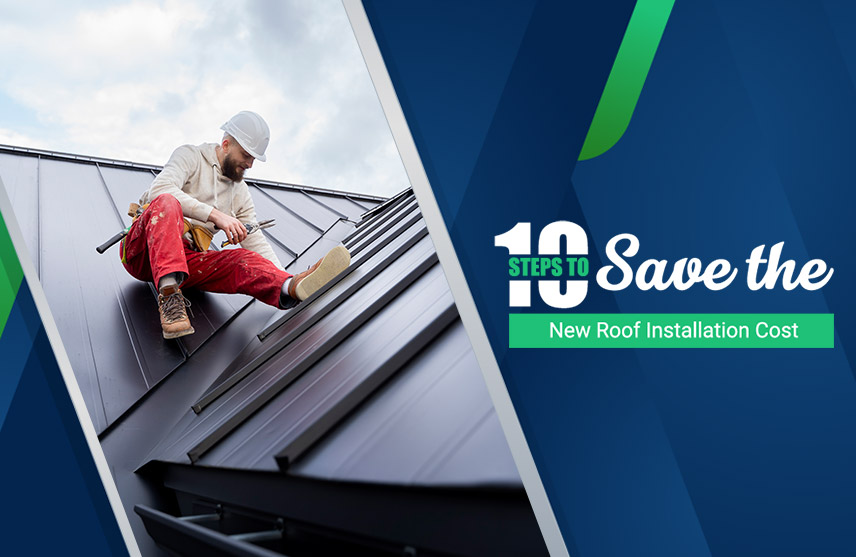
07 Jun 2024
A new roof is a one-time property maintenance cost. The truth is that roof installations can be costly. Fortunately, you can manage costs enormously and maintain quality if you plan well and make choices. This article examines ten steps for saving money on new roofing projects by both residential and commercial builders.
Step 1: Plan and keep your roof in good condition
Minor repairs and early detection are needed to stop the need for complete roof replacement. Regularly inspect your roof through a specialist’s eye for any signs of trouble that could escalate into major ones. Periodic maintenance such as keeping downspouts clear of debris and cutting back tree limbs close to the rooftop can also keep your current roof in good condition longer so that you may not have to spend when replacing.
Step 2: Consider roof repair instead of replacement.
If your roof appears to have some slight damage, we recommend that you consider repair before full replacement. An expert in roofing will have to determine the extent of the damage and see if it can be repaired without physically removing the whole roof. In many cases, fixing leaks, replacing missing shingles, or flashing repairs can be done at a fraction of the total replacement cost.
Step 3: Get to know about cost-effective roofing materials.
Some roofing materials, although durable and beautiful, are often expensive. Asphalt shingles are the most popular and affordable residential roofing for budget-oriented projects. Instead of unpainted metal, commercial buildings may use metal roofs with a painted finish that is cheaper but still strong.
Step 4: Get more than one quote and bargain.
Never be satisfied with the first estimate you receive. Obtain written quotes from a minimum of three competent roofers. Examine quotes to find the scope of work, materials used, and labor costs for each roofer. Thereafter, you can negotiate a competitive price with the preferred contractor, after identifying the rates
Step 5: Benefit from Off-Season Discounts
Roofing firms are usually more occupied during the peak season (spring and summer). Think about fixing your new roof in the fall or winter, when there is less demand. Numerous experts give price cuts during these transition periods to draw many clients; thus, you may enjoy a significant reduction in the cost of the entire job.
Step 6: DIY roof installation could be a good idea, subject to some precautions.
If you are skilled and willing to spend some time, doing small and simple work can save you a lot of money. However, this way has its risks. Roofing is a dangerous job; if done wrong, it may result in leakages, structural damage, or even invalidation of the warranty on materials used for construction. Go for the DIY route only when you have the skills and knowledge required to ensure a safe installation.
Step 7: Financing Options to Explore
Initially, the new roof can be a substantial investment. Numerous roofing firms and financiers who provide credit terms may enable you to pay over a selected period. To find the best finance plan that falls within your budget, make sure you compare loan packages and interest rates.
Step 8: Seek out rebates and tax credits.
For instance, some energy-efficient roofing materials can come with rebates or tax credits offered by various government agencies and local municipalities. It can, in turn, help reduce the new roof installation cost. Look for any available programs around you and inquire from experts about the appropriate materials to use that can earn you such benefits.
Step 9: Recycled Roofing Materials in Question
Occasionally, some roofing materials, such as metal, can be recycled and applied again to new roofs. These materials are economical and conserve the environment. Engage potential constructors in a conversation about reusing old materials.
Step 10: Consider Long-term Value
Always consider the long-term value of a good roof when focusing on the front-end costs. Do not be tempted to save money by selecting substandard materials or going with inexperienced contractors. Ultimately, you save more by investing in a better-quality roof that will last longer because it does not require excessive repairs and premature replacements.
To sum up,
By applying these suggestions in addition to a strategic plan, one can reduce the costs of new roofing without compromising on its value and efficiency. Remember that a solid roof is an investment in your property’s future and welfare for several years.